Hone your observation skills with this Seeing/Drawing technique
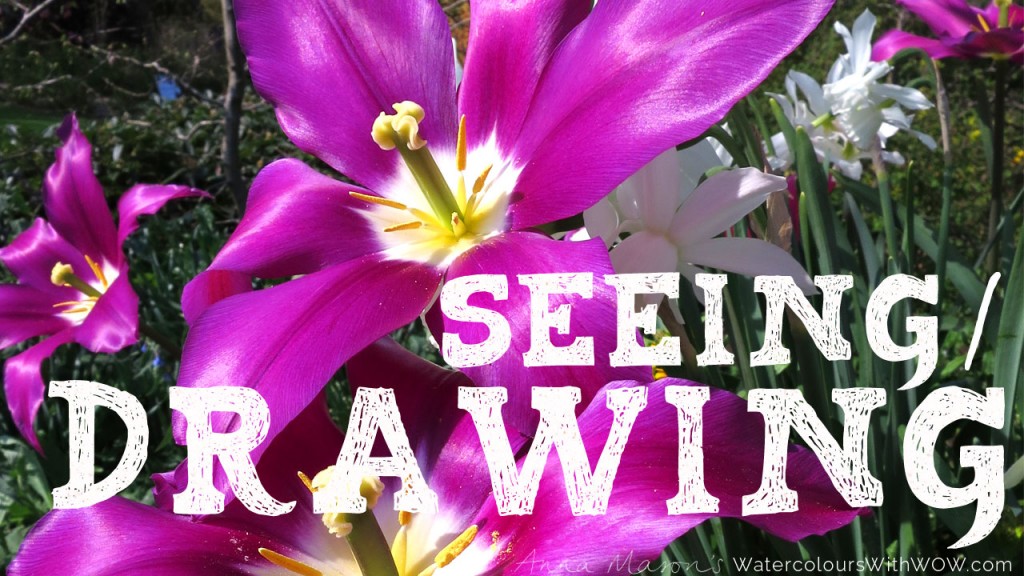
Drawing successfully, just like painting successfully, relies on your ability to really ‘see’ your subject.
Specifically this means being able to observe the relationships between the different parts of what you observe.
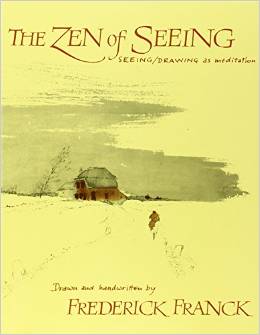
‘The Zen of Seeing: seeing/drawing as meditation’ written by Frederick Franck
I’ve recently read a fascinating book called ‘The Zen of Seeing: seeing/drawing as meditation’ written by Frederick Franck in 1973.
In it Franck proposes that:
We do a lot of looking: we look through lenses, telescopes, television tubes..Our looking is perfected every day- but we see less and less…
He describes how ever more gadgets ‘from cameras to computers from art books to video tapes’ serve give us a greater sense of separation from the world around us that we perceive – turning us into ‘objects’ that look at ‘subjects’.
And if that’s what Frederick thought when he wrote in the early ’70’s I think we can take a guess at what he might think of us today, zoned-out on our smart phones for hours a day!
He describes this kind of looking – the usual everyday kind – as being all about judging and labelling. A useful and necessary survival strategy – but one that leaves us feeling separate from our surroundings.
‘When I “look” at the world and label it’s phenomena, I make immediate choices, instant appraisals- I like or dislike, accept or reject what I look at, according to its usefulness to the “me”.
‘Seeing’ on the other hand is when your complete, unwavering, attention is on your visual sense, allowing you to cease choosing and labelling what you see, and to become absorbed instead in all the detail and visual complexity of the world around you.
And in this absorption, for a brief time, the usual perception of “me” and “not-me” are suspended and a deeper connection is felt with what you see. It’s this state that Franck is referring to as the ‘Zen of seeing’ – as a meditation.
Seeing/Drawing
Franck has a specific technique he calls ‘seeing/drawing’ to get you to enter this ‘seeing’ state and radically improve your observation skills.
I had a go at it this week and I thoroughly recommend you try it too.
You can observe directly the world around you, but I think it can work just as well observing a quality photograph too if you prefer.
That’s what I did. And if you want to use the one I used, I’ve included it here for you to download (opens in a new window). You could even try painting it too if you like.
Other than that, all you need is a pen or pencil and paper.
Here’s what to do:
- Look at what’s before you (the photo or the scene) and then close your eyes for a couple of minutes
- Open your eyes and look at what’s in front of you again really intently – as Franck says, ‘feel that you are alone with it on earth! That it is the most important thing in the universe’
- Take a pen or pencil loosely ion your hand and whilst you keep focused on what you’re observing, let your pen ‘follow on the paper what the eye perceives’ as if with the nib or lead you are ‘caressing the contours’ of the outline edges of all the different component shapes of what you see.
- Don’t look down and check what’s happening on your paper – it really doesn’t matter! Just don’t let your eye leave what it is seeing
- Do this for at least 20 minutes or for as long as you keep noticing more to what you are seeing
You won’t come up with a masterpiece! Check out my tulip seeing/drawing:
But I’m sure you’ll have a really interesting experience where you start to really ‘tune-in’ to seeing and ‘tune-out’ your thinking about what you look at.
If you try this I’d love to hear how you get on in the comments below.
Or do use the comments to let me know if you’ve tried anything like this before.
Happy seeing/drawing!
x
Browse more blog posts
Share this post!
33 Comments
Leave a Comment
Share this post!
Subscribe to blog updates
Blog Updates
The information you provide here will be used only to deliver the email course, along with other relevant updates from me. You can unsubscribe anytime. Click here for our privacy policy.


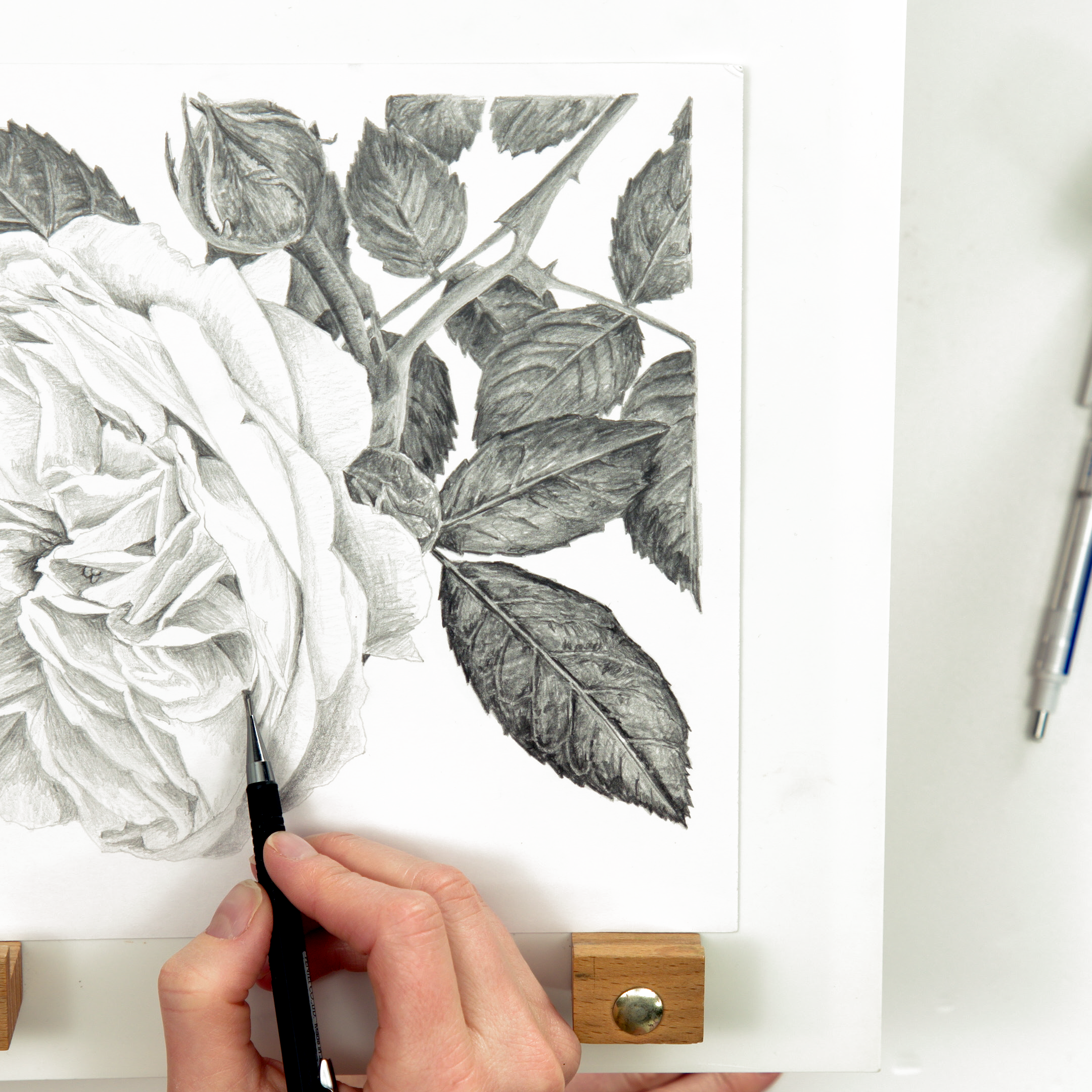
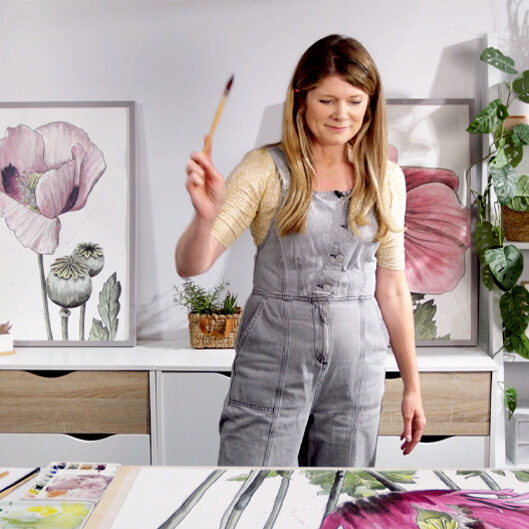
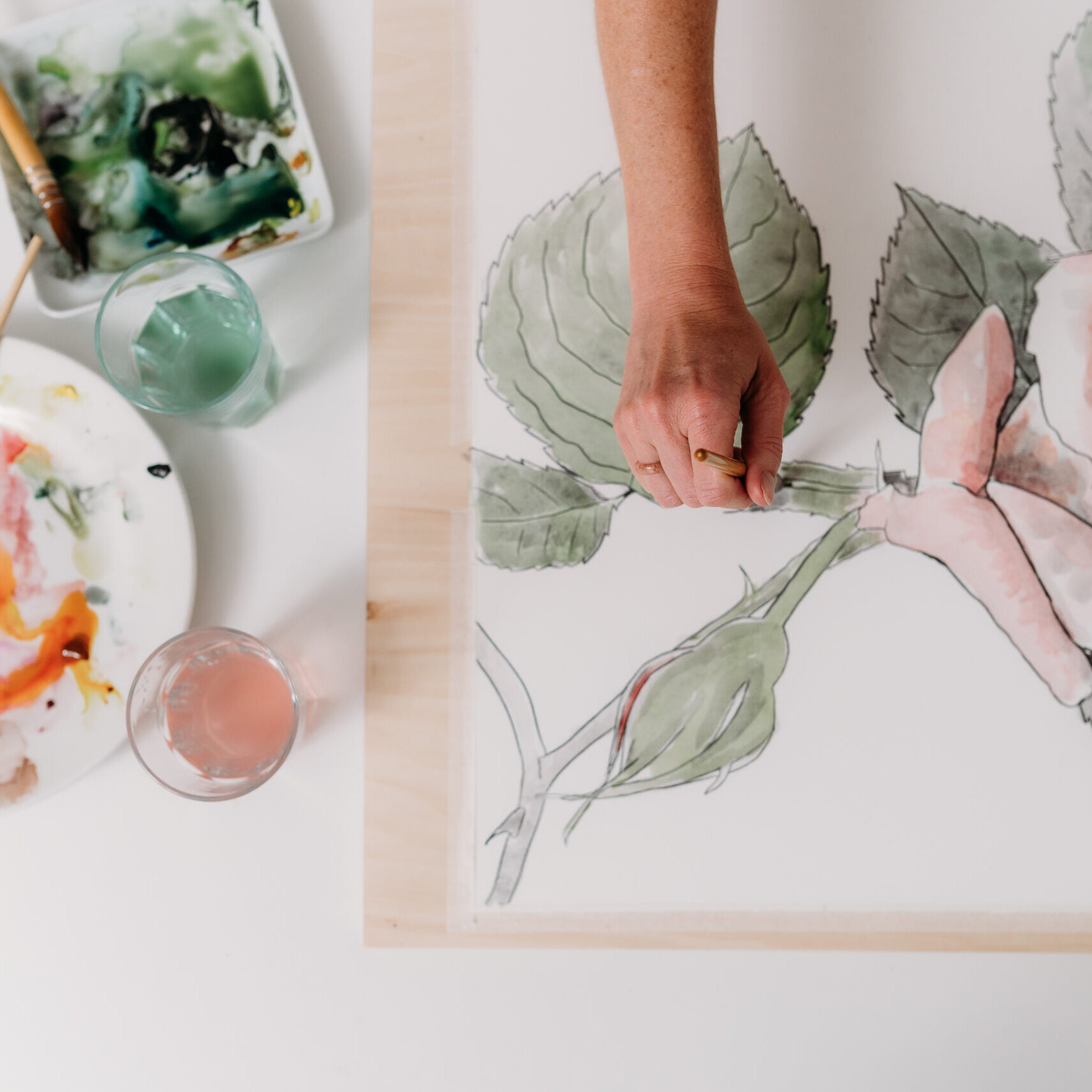
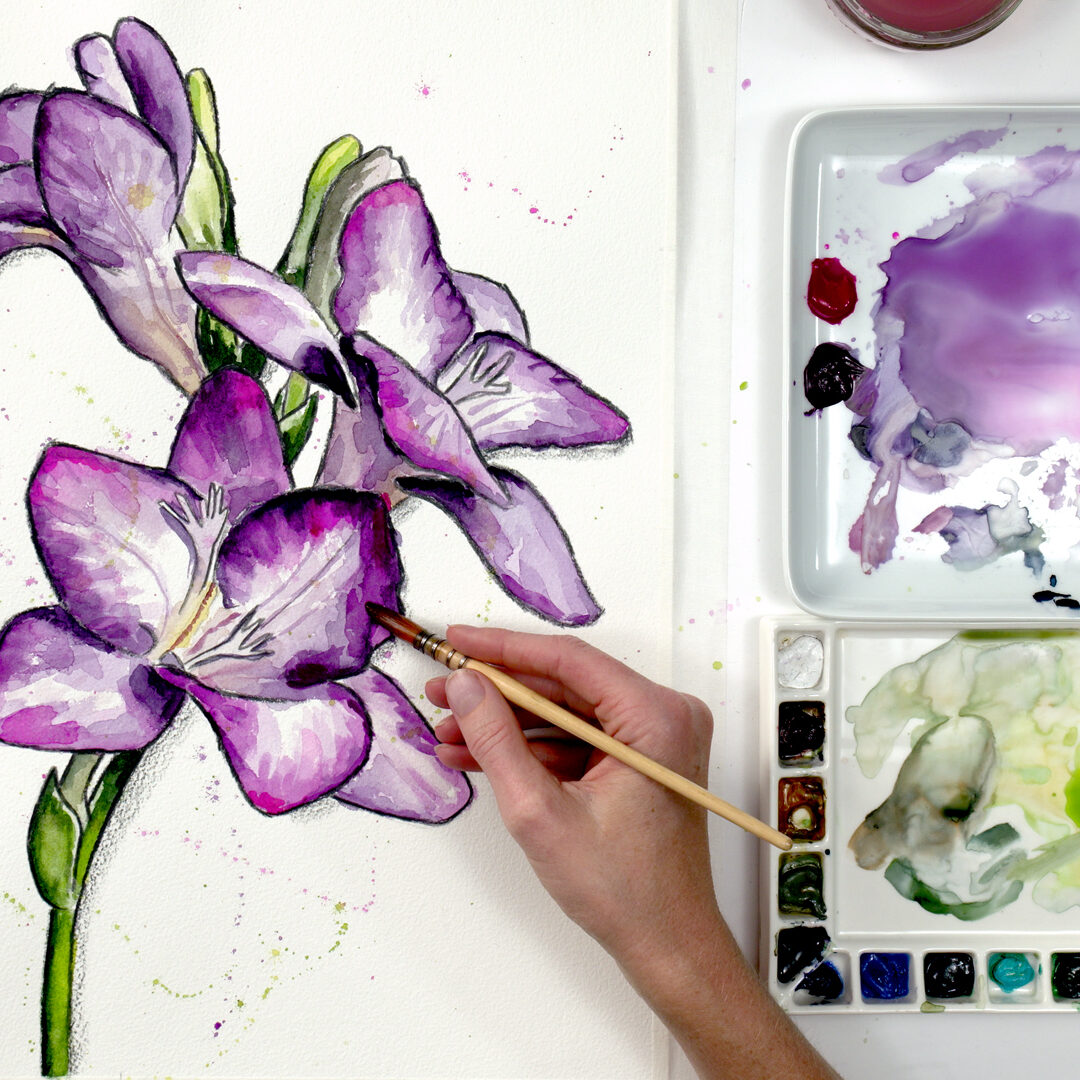
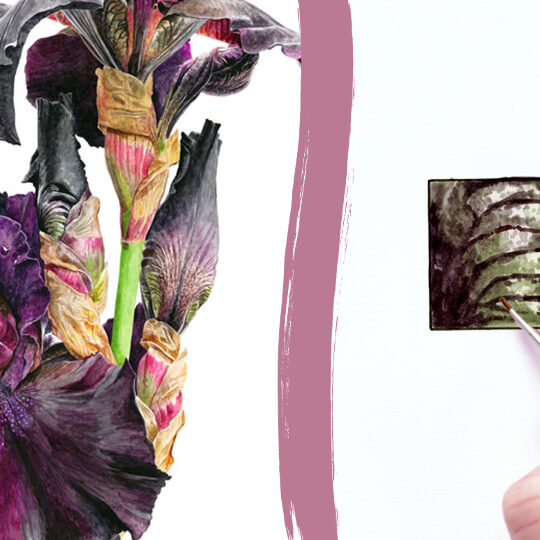
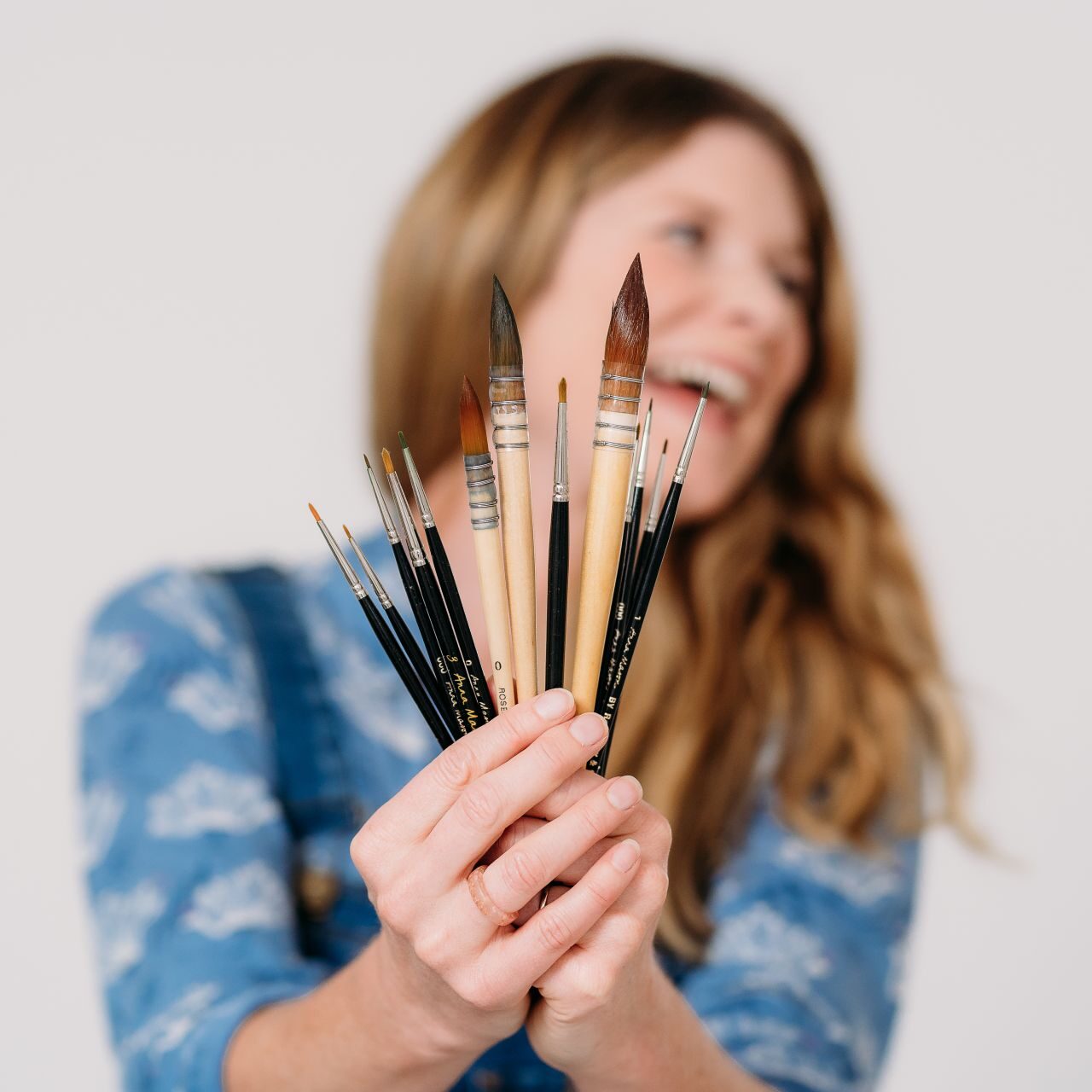
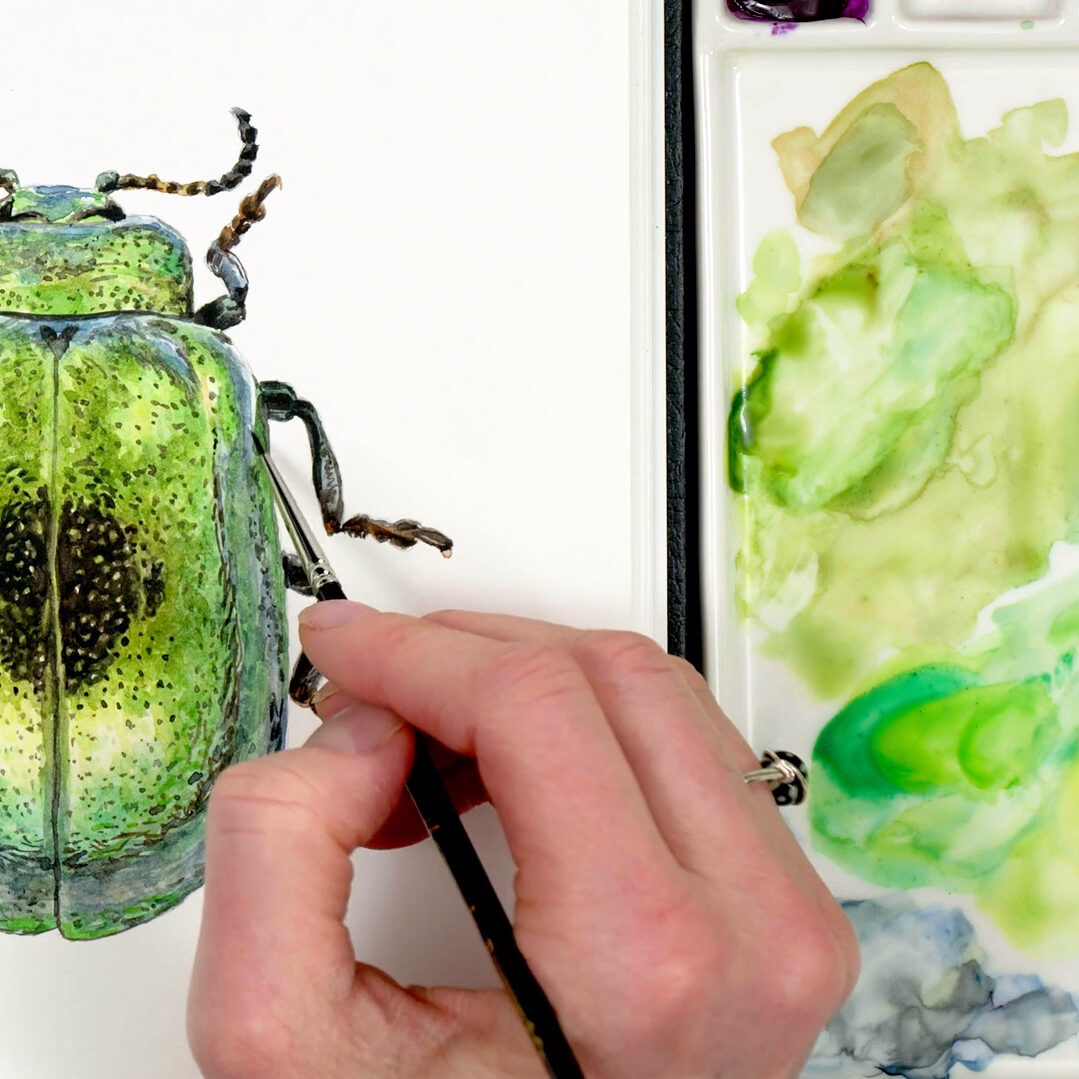

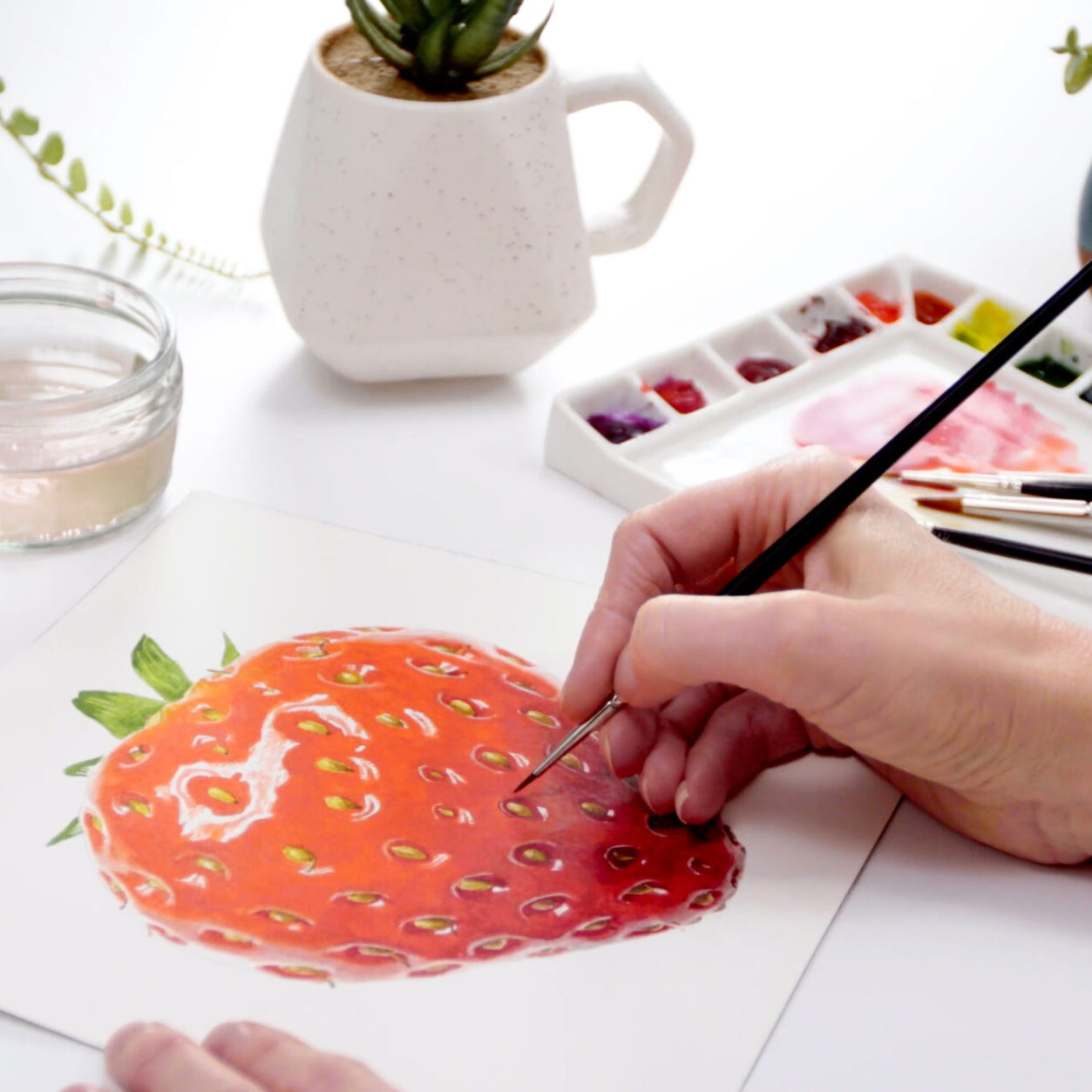
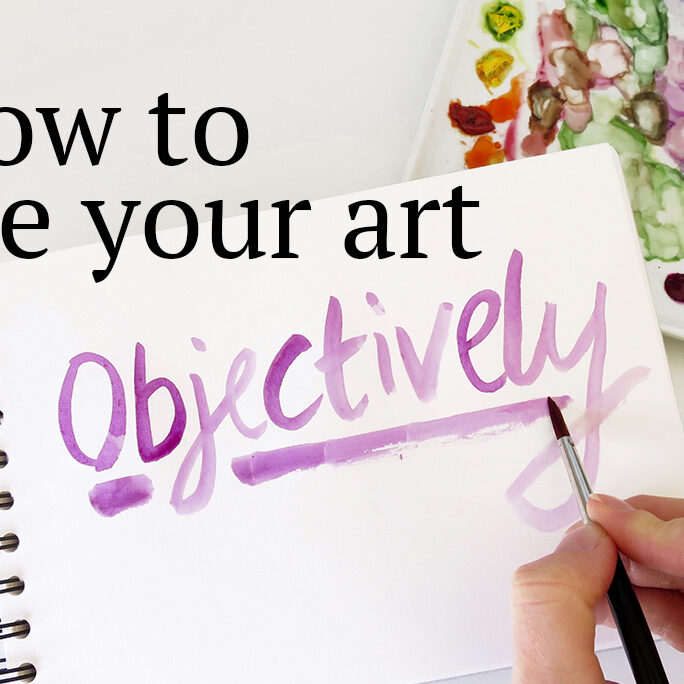
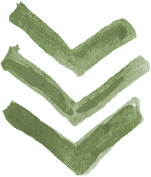
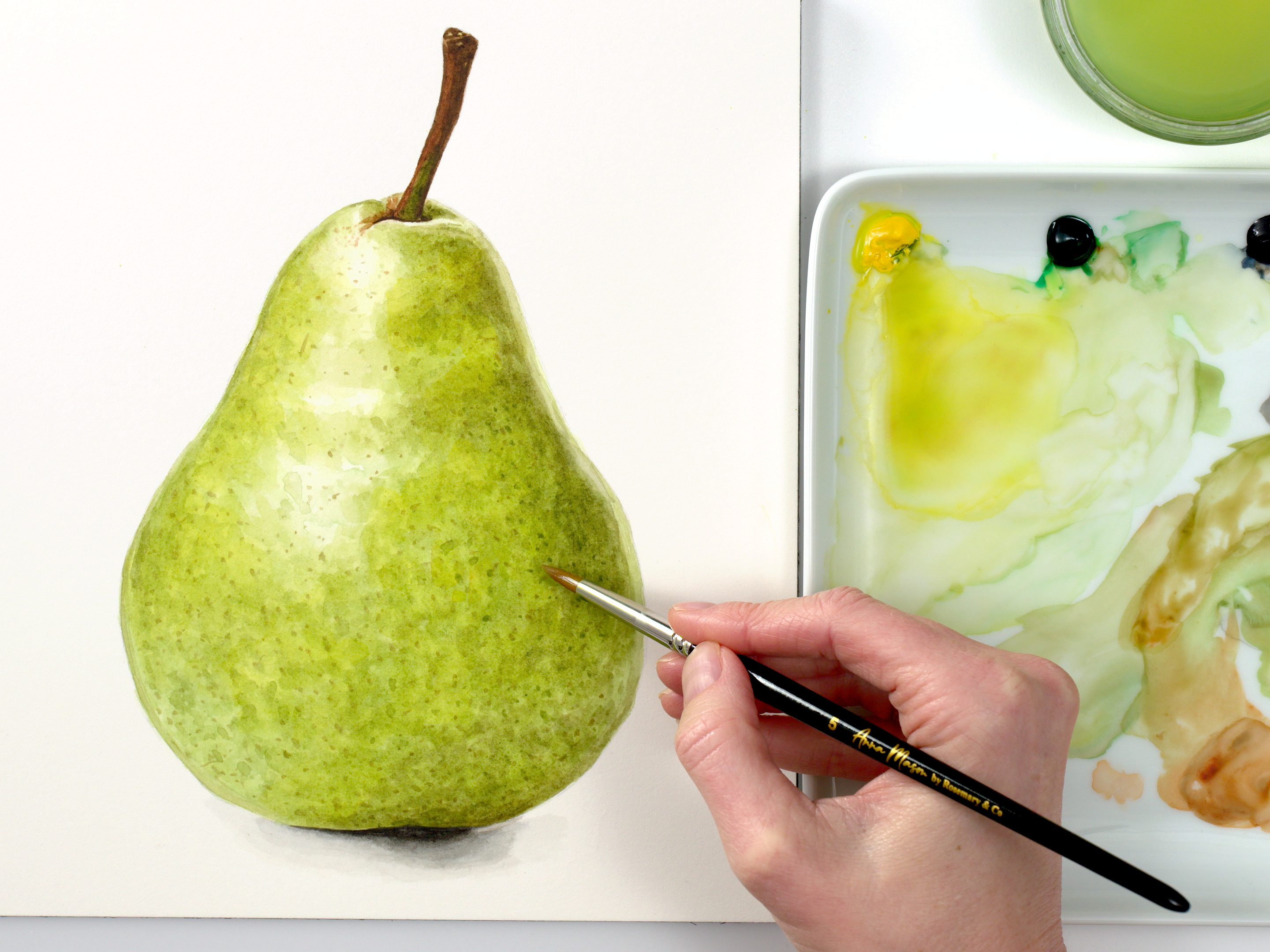

ilove your ideas of painting, i love it< always please to see your drawing to insparing.
me to paint as i will have a go. please excuse my english grammer because i am profoundly deaf from birth. hoping to see more of your work which its so relexing to paints
ilove your ideas of painting, i love it< always please to see your drawing to insparing.
me to paint as i will have a go. please excuse my english grammer because i am profoundly deaf from birth. hoping to see more of your work which its so relexing to paints
Thank u for a thoughtful and interesting post… to quote wordsworth…
the world is too much with us; late and soon,
Getting and spending, we lay waste our powers;—
Little we see in Nature that is ours;
this might help us change that
Thank u for a thoughtful and interesting post… to quote wordsworth…
the world is too much with us; late and soon,
Getting and spending, we lay waste our powers;—
Little we see in Nature that is ours;
this might help us change that
hi Anna,
Our tutor at life drawing class makes us do this a couple of times, before we start sketching. You sure get some fun results.
hi Anna,
Our tutor at life drawing class makes us do this a couple of times, before we start sketching. You sure get some fun results.
I have read your article about seeing. I have been to a drawing class run by Kate Lynch many years ago and was introduced to this kind of drawing while sitting in a garden looking at flowers and watering cans etc. It was quite an experience when looking at the finished drawing.
I have read your article about seeing. I have been to a drawing class run by Kate Lynch many years ago and was introduced to this kind of drawing while sitting in a garden looking at flowers and watering cans etc. It was quite an experience when looking at the finished drawing.
Hi Anna,
A friend gave this book to me back in 2005/6 and I have done the exercises a couple of times. It really is a wonderful book for learning how to really see. I highly recommend it and thank you for the article! 🙂
Hi Anna,
A friend gave this book to me back in 2005/6 and I have done the exercises a couple of times. It really is a wonderful book for learning how to really see. I highly recommend it and thank you for the article! 🙂
what you’re describing is a basic technique taught in all drawing classes (in formal settings). it’s called contour drawing. it’s an invaluable skill for all artists in all mediums. the master of this techniques is Ellsworth Kelly. You and your students would greatly benefit looking at the work of this great american artist, specifically his book called ‘Plants.’ aside from that, if you google – “ellsworth kelly images of drawing plants” – you will see some of his beautiful drawings.
regards,
D Maar
Thanks so much! I will check this out!
what you’re describing is a basic technique taught in all drawing classes (in formal settings). it’s called contour drawing. it’s an invaluable skill for all artists in all mediums. the master of this techniques is Ellsworth Kelly. You and your students would greatly benefit looking at the work of this great american artist, specifically his book called ‘Plants.’ aside from that, if you google – “ellsworth kelly images of drawing plants” – you will see some of his beautiful drawings.
regards,
D Maar
This is precisely the technique advocated by Betty Edwards in “Drawing on the Right side of the Brain”.
This is precisely the technique advocated by Betty Edwards in “Drawing on the Right side of the Brain”.
thank you for the reference………its very useful.look forward for more
thank you for the reference………its very useful.look forward for more
On our side of the pond, as they say, we call this blind contour drawing… Not looking at the paper. If you do look down at your drawing, that is when you stop drawing.
This method surely makes one see/draw a lot more of the intricate details. If you look at your drawing there are a myriad of detail marks that you saw.
I also think it adds a more expressive quality to the line itself.
ThThaanks for all of your inspiration.
On our side of the pond, as they say, we call this blind contour drawing… Not looking at the paper. If you do look down at your drawing, that is when you stop drawing.
This method surely makes one see/draw a lot more of the intricate details. If you look at your drawing there are a myriad of detail marks that you saw.
I also think it adds a more expressive quality to the line itself.
ThThaanks for all of your inspiration.
This is a great idea. And your drawing may not be as perfect as you want but it’s still a charming picture in its own right. Lovely big lines and graceful shapes that you might not get when aiming for an exact copy.
I struggle with the impatience that makes me want to get down to the real picture, but taking the time to do this sort of exercise pays dividends. I can only do it when I know I have a half day to dedicate to the painting, because I have to put in 15-20 minutes on this exercise every time I sit down to paint. Sometimes I only have 10 minutes in a day to do some painting, and I use that time to add a thin wash and walk away!
This is a great idea. And your drawing may not be as perfect as you want but it’s still a charming picture in its own right. Lovely big lines and graceful shapes that you might not get when aiming for an exact copy.
I struggle with the impatience that makes me want to get down to the real picture, but taking the time to do this sort of exercise pays dividends. I can only do it when I know I have a half day to dedicate to the painting, because I have to put in 15-20 minutes on this exercise every time I sit down to paint. Sometimes I only have 10 minutes in a day to do some painting, and I use that time to add a thin wash and walk away!
Kathy George has a new book” the 30 day drawing challenge”, for those who are terrified of drawing and sure they can’t do it.” Excellent daily exercises. Available on Amazon.
Kathy George has a new book” the 30 day drawing challenge”, for those who are terrified of drawing and sure they can’t do it.” Excellent daily exercises. Available on Amazon.
Golly! I’ve just tried this method and my picture’s unrecognisable! Everything’s on top of everything else. (I’m trying it on three orchids I photographed at an orchid show) How did you get your spacing so good – you can see each tulip separately. Do you keep your finger on the place you’re drawing? That’s the only way I can see that my one petal won’t totally overlap the other. When I’d done the three flowers I tried to put in the leaves in the background, but having no idea where anything was it all jumbled over the flowers. Maybe that doesn’t matter? Is the idea rather to help us to ‘see’ everything in the picture? I’m a total beginner at watercolour and so far most of what I’ve done is only good enough for the bottom of a parrot’s cage, but it’s been great fun and presumably I’m improving. Thanks for your guidance. Anne Cremer (Johannesburg)
Hi Ann, I don’t think it matters what it looks like when you do it – really the thing is to slow down and really see the subject by following the contours of the shapes within it with your eye. I’m sure you’re improving 🙂
Golly! I’ve just tried this method and my picture’s unrecognisable! Everything’s on top of everything else. (I’m trying it on three orchids I photographed at an orchid show) How did you get your spacing so good – you can see each tulip separately. Do you keep your finger on the place you’re drawing? That’s the only way I can see that my one petal won’t totally overlap the other. When I’d done the three flowers I tried to put in the leaves in the background, but having no idea where anything was it all jumbled over the flowers. Maybe that doesn’t matter? Is the idea rather to help us to ‘see’ everything in the picture? I’m a total beginner at watercolour and so far most of what I’ve done is only good enough for the bottom of a parrot’s cage, but it’s been great fun and presumably I’m improving. Thanks for your guidance. Anne Cremer (Johannesburg)
You can use Allavsoft to download any Annamasonart.com class in HD, MP4, AVI, FLV and any video format compatible with your iPhone, iPad, Samsung, Blackberry, Android, Apple TV, etc.
Thanks for the information
I think urban sketching is exactly this. I have tried a hand at this but I just cannot get into it. I’m the kind of person who needs a structured type of painting: step 1 – drawing the subject, step 2 … Thank you so much for sharing the method @anna_mason
This is a wonderful article, I truly want to learn to see what is in front of me and get it onto my paper… I am loving your new drawing courses. I will try this blind drawing and purchase and read this book you suggest. Thank you for always bringing out in me, what has been locked up inside me for so long!
Oh that’s wonderful to hear, thanks for commenting Nancy!